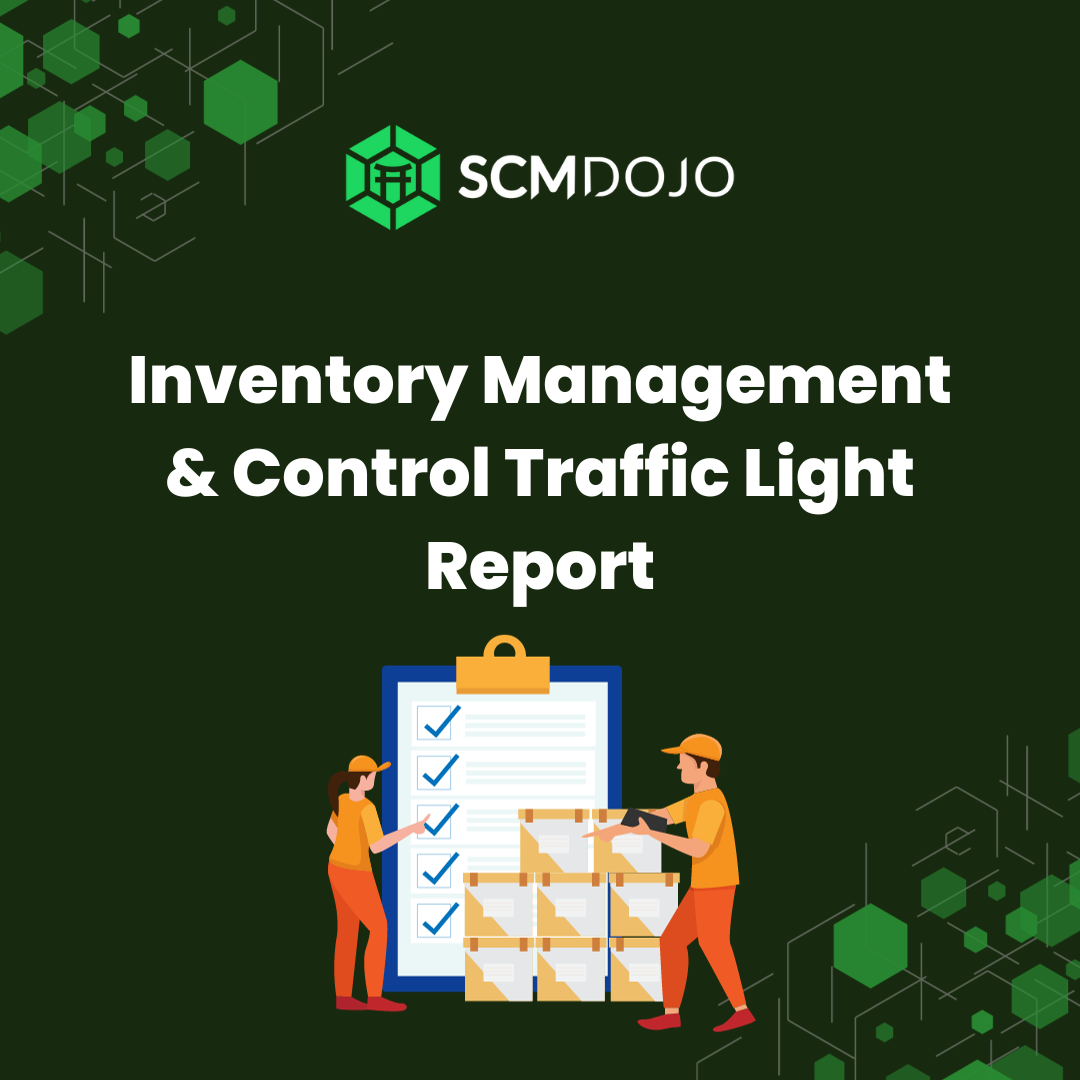The impact of lead time on inventory is well known, but in the real world the relationship can be much harder to define when multiple product types, management systems and sites are involved. A lack of central planning compounds the problem by impairing the end-to-end view of inventory positions. This study explains how Optimizing Inventory and Lead Time Management works in Pharmaceutical Business
This is the challenge faced by a leading pharmaceutical company headquartered in Europe. A research project* at the Zaragoza Logistics Center (ZLC), Zaragoza, Spain, analysed the company’s multi-faceted inventory systems, and developed a model that helps the manufacturer to identify and prioritize opportunities for optimizing inventory levels and lead times.
Complex Competitive Environment
A number of internal factors complicate the company’s inventory and lead time management systems.
In broad terms, there are three main stages in the process to manufacture a finished pharmaceutical product. First, raw materials are converted into drug substances (DS); the active ingredients that make up finished products. Second, these active ingredients are turned into familiar items such as tablets, also known as drug products (DP). Finally, tablets and other product formats are packaged and become finished goods (FG).
In the company, each of these stages has six sub-processes. Examples are Production, where material is transformed into product forms, and Quality Out, which verifies that the product meets all required quality criteria before being shipped to the warehouse.
Importantly, each sub-process has its own lead time, which are summated to arrive at the end-to-end lead time (E2E LR).
In addition, the pharmaceutical company’s extensive product range is divided into product families and SKUs. The families are ranked differently; those associated with the highest value and profit levels tend to command the most attention. Another complication is that the company’s factories perform differently, and these disparities are not clearly quantified.
The company’s inventory and lead time processes also are shaped by external market drivers.
For example, drugs are subject to rigorous regulation, and must be available when needed to protect the wellbeing of patients. Also, there is increasing pressure to cut costs in the face of intensifying competition from generic drugs and the expiration of product patents.
Lowering inventory levels is one of the cost-cutting strategies that the company is pursuing in response to these various challenges. However, achieving this goal must not compromise service levels – of which lead time is a key component.
The research project investigated the role of E2E LT as a strategic lever for streamlining inventory. In the context of the research project, E2E LT is defined as the time that elapses from when production of the key ingredients of a drug substance form commences, to the warehousing stage of the finished good.
Three-step Approach in Optimizing Inventory and Lead Time
The study is based on historical records of lead times and inventory levels over a one-year period. The data set spans various intermediate and final product forms across multiple production and distribution sites across the company’s manufacturing network.
The primary aim of the research is to provide data-driven evidence of a correlation between inventory and lead time. To achieve this goal, the project addresses three key research questions.
- How does the occurrence of high inventory levels in several nodes and networks within the pharmaceutical company’s supply chain relate to lead time and/or lead time variability patterns? And which nodes and networks are the best performers from an inventory/lead time perspective?
- Is it possible to determine and quantify the relationship between lead time and inventory using statistical analysis?
- What is the potential impact of reducing lead time and its variability on inventory while maintaining acceptable service levels, assuming all other factors remain the same?
To answer these questions, the research was divided into three main steps. The first step involved reviewing relevant products and processes, deciding which areas to focus on, and evaluating the historical data. Next, an empirical and statistical analysis of the lead time/inventory data was performed. Historical data provided by the company was augmented by insights gained from a survey distributed to planners in the company. Thirdly, a simulation model illustrated different lead time scenarios.
You will find the following inventory guides very useful when thinking about Optimizing Inventory and Lead Time:
The Complete Guide to Plan-For-Every-Part (PFEP)
The Ultimate Guide to Inventory Planning Methods
Materials Management Competencies Assessment
Areas of Concern for Optimizing Inventory and Lead Time
The analyses of inventory, lead times and the relationship between the two revealed many opportunities for improvement. Simulating multiple scenarios helped stakeholders to envisage the potential benefits of reducing lead time and its variability in a multi-stage manufacturing system.
For example, most inventory (53%,) is held in the form of DS product. This is not surprising since maintaining large volumes of pre-finished stock enables pharmaceutical companies to leverage the advantages of delayed differentiation. Still, the value of this static product is relatively high, and the practice of maintaining substantial stocks is a concern.
Furthermore, the company classifies inventory in four broad categories: product that is undergoing quality inspection, stock that is in transit, work-in-process inventory, and product that is available for use. An analysis of both overall and product-form inventory revealed that a significant portion is parked in the quality inspection stage.
Another concern is that inventory levels appear to be trending upwards. A broad analysis of all product forms – DS, DP and FG – showed that total stock levels increased over the previous 12-month period.
On a more granular level, the analysis affirmed that average stock levels vary significantly from one site to another; some sites appear to consistently hold higher-than-average inventory volumes.
The lead time analyses also raised a number of red flags. For instance, actual lead times were on average lower than the planned values, but they were subject to a lot of variability.
An examination of how DS, DP and FG type products impact E2E LT showed that the DS stage makes the largest contribution to overall lead times. This result is in line with the finding that DS items represent the largest share of total inventory held – it also provides preliminary, data-driven evidence that high lead times in the pharmaceutical company’s operations result in higher inventory volumes.
The simulations took these results a step further by modelling the outcomes of different reduction strategies. A notable finding is that although decreasing lead time variability in the DP stage achieved the maximum decrease in average inventory levels, applying the same strategy across the system was even more effective in terms of lowering inventory volumes.
Results and Recommendations
The research findings indicate that the pharmaceutical company can capture significant savings by addressing inventory and lead time issues – especially if the enterprise prioritizes its improvement efforts.
One of the most notable observations is that lead time performances can vary widely between product types and manufacturing sites. Improving these performance levels should be a key area of focus for the manufacturer.
More specific findings and recommendations highlighted by the project include:
Pay attention to DS products. The trend towards larger volumes of inventory is attributable to increases in DS stock levels. Certain DS sites exhibit relatively low average inventory levels and higher-than-average variability in the amount of stock they held. DS inventory management should be a high-priority goal for the Company.
Consider each stage of the six sub-processes – especially quality. The analyses revealed very high levels of inherent variability in lead times within each stage such as Production and Quality. But Quality lead times account for the largest share of total E2E LT. Moreover, this stage also exhibits the highest levels of unpredictability. It follows that quality lead times at each stage could be a starting point for programs to control lead times.
Investigate certain combinations of nodes. While examining the relationship between lead time and inventory over time, prominent interdependencies between certain groups of nodes came to light.
Investigate inter-site variability. Some DS and FG sites appear to be better at controlling variability than others. If these disparities cannot be attributed to factors such as unpredictable demand and the complexity of specific product portfolios, benchmarking might reveal why performances differ from site to site in these product categories.
DS and DP variabilities. Simulations indicated that reducing DS stage lead time averages and DP stage lead time variability could yield significant benefits for the company.
Holistic View key
Clearly, lead time and inventory are inextricably linked. But the research shows that the pharmaceutical company’s complex manufacturing system introduces nuances to this relationship that merit further investigation. The findings and recommendations will help the manufacturer to delve further into these issues.
While there are many individual actions that the company can take, the research highlights the importance of a holistic approach to improving inventory and lead time performance.
Controlling lead times at each specific stage of the manufacturing cycle could achieve reductions in inventory levels. However, the cumulative benefit of such a strategy across every stage is potentially much greater. Also, planners at each stage must coordinate their efforts to ensure that changes do not introduce systematic problems.
Perhaps even more important, is that the company’s existing inventory planning, reviews and ordering systems tend to operate in silos. A centralized, collaborative planning system augmented by tighter lead time controls could be the most rewarding path to inventory optimization.
There are plans to continue the research in a follow-up project.
* The research was carried out by Shwethika Adusumalli and Ashish Thomas Augustine, for their ZLC Master of Engineering in Logistics and Supply Chain Management thesis titled Linking Lead Time and Inventory in the Pharma Business. The thesis won the ZLOG Outstanding Thesis Award. Dr Spyridon Likkakos, Assistant Professor at ZLC, supervised the project. For more information on the research contact Spyridon Likkakos at: [email protected]
Related links:
-
- Read more Managerial Publications >> https://www.zlc.edu.es/research/managerial-publications/
- ZLC Core Research Areas >> https://www.zlc.edu.es/research/core-research-areas/
- ZLC Research Projects >> https://www.zlc.edu.es/research/projects/
About ZLC
Zaragoza Logistics Center (ZLC) is a research and educational institute affiliated to the Massachusetts Institute of Technology (MIT) and the University of Zaragoza (UZ). Specialized in logistics and supply chain management, ZLC is the Spanish center of the MIT Global SCALE Network, an international alliance of 6 leading research centers dedicated to the development of supply chain excellence through innovation.
Social Media Links for ZLC: Linkedin; Facebook, Twitter, YouTube
About the Author- Dr Muddassir Ahmed
Dr MuddassirAhmed is the Founder & CEO of SCMDOJO. He is a global speaker, vlogger and supply chain industry expert with 17 years of experience in the Manufacturing Industry in the UK, Europe, the Middle East and South East Asia in various Supply Chain leadership roles. Dr. Muddassir has received a PhD in Management Science from Lancaster University Management School. Muddassir is a Six Sigma black belt and founded the leading supply chain platform SCMDOJO to enable supply chain professionals and teams to thrive by providing best-in-class knowledge content, tools and access to experts.
You can follow him on LinkedIn, Facebook, Twitter or Instagram







